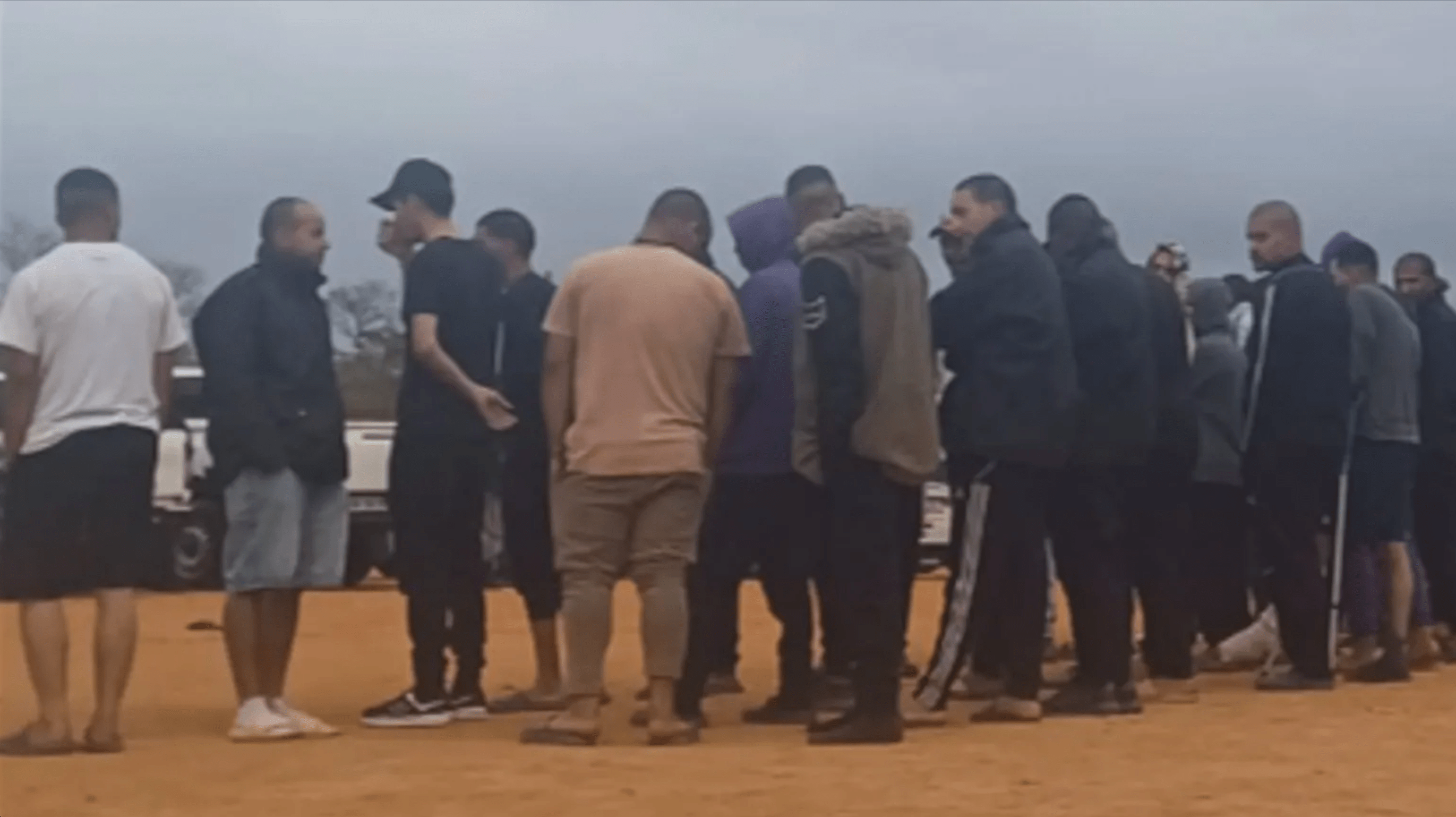WASHINGTON – Creativity. Imagination. Thinking outside the box.
The report from the September 11 commission makes abundantly clear that al Qaeda terrorists, tragically, had those abilities and the US government did not. And it still may not have what’s needed to stop the next attack.The commission’s final report describes an out-of-touch bureaucracy that relied on outdated intelligence-gathering methods set up to combat the Soviet Union.It was overmatched by a nimble, flexible band of committed terrorists who meticulously located and exploited America’s weaknesses.The report itself doesn’t blame anyone by name.But familiar figures are cited throughout, from former national security adviser Sandy Berger and ex-Defense Secretary William Cohen in the Clinton administration to Condoleezza Rice, Bush’s national security adviser, and current Deputy Defense Secretary Paul Wolfowitz.George Tenet, just retired, was CIA director under both presidents.As late as September 4 2001, former White House counter terrorism aide Richard Clarke was arguing in a memo that the Bush administration, just like the Clinton administration, had yet to come to grips with al Qaeda.”Are we serious about dealing with the al Qaeda threat? Is al Qaeda a big deal?” Clarke wrote to Rice.Even as evidence mounted in the summer of 2001 that al Qaeda was planning a major strike inside the United States, “we do not believe leaders understood the gravity of the threat”, the report said.”The most important failure was one of imagination,” it concluded.Contrast that with al Qaeda’s “terrorist entrepreneurs”, as the commission labelled them.Headquartered in dusty camps in Afghanistan – one of the most impoverished, underdeveloped nations on Earth – al Qaeda was able to attract a cadre of highly educated Islamic militants brimming with unusual ideas about attacking the West.Khalid Shaikh Mohammed, the mastermind of the September 11 attacks who now is in US custody, has told his interrogators of a multitude of other potential plots:poisoning of drinking water reservoirs; simultaneous bombings of several trans-Pacific commercial flights; using crop dusters to spray chemicals or biological agents; filling apartments with natural gas to be detonated by remote control; and bombing cargo flights using dolls wearing clothes concealing nitrocellulose explosives.”The fact of the matter is, we just didn’t get it in this country,” said Lee Hamilton, co-chairman of the Sept 11 commission and a former Democratic congressman from Indiana.”We could not comprehend that people wanted to kill us, they wanted to hijack airplanes and fly them into big buildings.”The FBI, CIA and other agencies kept the public in the dark about the threat.They also didn’t share what they had with each other.”How in God’s name are you supposed to imagine a threat if the facts are being withheld from you?” asked Bob Kerrey, a commission member and former Democratic senator from Nebraska.That’s why it’s vitally important that the government improve its ability to analyse the intelligence it collects on terrorism and share those conclusions more widely, particularly with state and local officials who have more eyes and ears on the street.Weekly intelligence bulletins, sent to police agencies nationwide, often draw criticism because their topics seem so mundane.Farmer’s almanacs have been cited as possible indicators of terrorism because they contain a wealth of information about possible targets.Harbour officials have been told to beware of bombs in floating debris, even beer coolers.Cell phones have been described as possible bomb detonators.Yet that kind of thinking is exactly what the government rarely did in the months and years before Sept 11.The model for the future might be found in the past.The commission said that a major exception to the government’s intelligence-sharing problems came in December 1999, when there were intense warnings of a possible terrorist strike timed to the 2000 millennium celebrations.During those weeks, sensitive foreign intelligence found its way to airport managers and local police.High government officials were fully engaged and the public was made aware through multiple government statements.One terrorist, Ahmed Ressam, was arrested at the US-Canada border after a Customs official caught him trying to bring explosives to bomb the Los Angeles International Airport.After the threat passed, the government went back to its old ways.Then came the four hijacked planes.Although many changes have been made since then, the commission recommended a sweeping overhaul of foreign and domestic intelligence collection and analysis, including creation of a single White House official to oversee the CIA, FBI intelligence division and other agencies.Commission member John Lehman, a former Navy secretary, said the current intelligence system remains “dysfunctional” and needs further overhaul.- Nampa-AP* EDITOR’S NOTE – Curt Anderson has reported from Washington for The Associated Press for 10 years.And it still may not have what’s needed to stop the next attack.The commission’s final report describes an out-of-touch bureaucracy that relied on outdated intelligence-gathering methods set up to combat the Soviet Union.It was overmatched by a nimble, flexible band of committed terrorists who meticulously located and exploited America’s weaknesses.The report itself doesn’t blame anyone by name.But familiar figures are cited throughout, from former national security adviser Sandy Berger and ex-Defense Secretary William Cohen in the Clinton administration to Condoleezza Rice, Bush’s national security adviser, and current Deputy Defense Secretary Paul Wolfowitz.George Tenet, just retired, was CIA director under both presidents.As late as September 4 2001, former White House counter terrorism aide Richard Clarke was arguing in a memo that the Bush administration, just like the Clinton administration, had yet to come to grips with al Qaeda.”Are we serious about dealing with the al Qaeda threat? Is al Qaeda a big deal?” Clarke wrote to Rice.Even as evidence mounted in the summer of 2001 that al Qaeda was planning a major strike inside the United States, “we do not believe leaders understood the gravity of the threat”, the report said.”The most important failure was one of imagination,” it concluded.Contrast that with al Qaeda’s “terrorist entrepreneurs”, as the commission labelled them.Headquartered in dusty camps in Afghanistan – one of the most impoverished, underdeveloped nations on Earth – al Qaeda was able to attract a cadre of highly educated Islamic militants brimming with unusual ideas about attacking the West.Khalid Shaikh Mohammed, the mastermind of the September 11 attacks who now is in US custody, has told his interrogators of a multitude of other potential plots:poisoning of drinking water reservoirs; simultaneous bombings of several trans-Pacific commercial flights; using crop dusters to spray chemicals or biological agents; filling apartments with natural gas to be detonated by remote control; and bombing cargo flights using dolls wearing clothes concealing nitrocellulose explosives.”The fact of the matter is, we just didn’t get it in this country,” said Lee Hamilton, co-chairman of the Sept 11 commission and a former Democratic congressman from Indiana.”We could not comprehend that people wanted to kill us, they wanted to hijack airplanes and fly them into big buildings.”The FBI, CIA and other agencies kept the public in the dark about the threat.They also didn’t share what they had with each other.”How in God’s name are you supposed to imagine a threat if the facts are being withheld from you?” asked Bob Kerrey, a commission member and former Democratic senator from Nebraska.That’s why it’s vitally important that the government improve its ability to analyse the intelligence it collects on terrorism and share those conclusions more widely, particularly with state and local officials who have more eyes and ears on the street.Weekly intelligence bulletins, sent to police agencies nationwide, often draw criticism because their topics seem so mundane.Farmer’s almanacs have been cited as possible indicators of terrorism because they contain a wealth of information about possible targets.Harbour officials have been told to beware of bombs in floating debris, even beer coolers.Cell phones have been described as possible bomb detonators.Yet that kind of thinking is exactly what the government rarely did in the months and years before Sept 11.The model for the future might be found in the past.The commission said that a major exception to the government’s intelligence-sharing problems came in December 1999, when there were intense warnings of a possible terrorist strike timed to the 2000 millennium celebrations.During those weeks, sensitive foreign intelligence found its way to airport managers and local police.High government officials were fully engaged and the public was made aware through multiple government statements.One terrorist, Ahmed Ressam, was arrested at the US-Canada border after a Customs official caught him trying to bring explosives to bomb the Los Angeles International Airport.After the threat passed, the government went back to its old ways.Then came the four hijacked planes.Although many changes have been made since then, the commission recommended a sweeping overhaul of foreign and domestic intelligence collection and analysis, including creation of a single White House official to oversee the CIA, FBI intelligence division and other agencies.Commission member John Lehman, a former Navy secretary, said the current intelligence system remains “dysfunctional” and needs further overhaul.- Nampa-AP* EDITOR’S NOTE – Curt Anderson has reported from Washington for The Associated Press for 10 years.
Stay informed with The Namibian – your source for credible journalism. Get in-depth reporting and opinions for
only N$85 a month. Invest in journalism, invest in democracy –
Subscribe Now!






